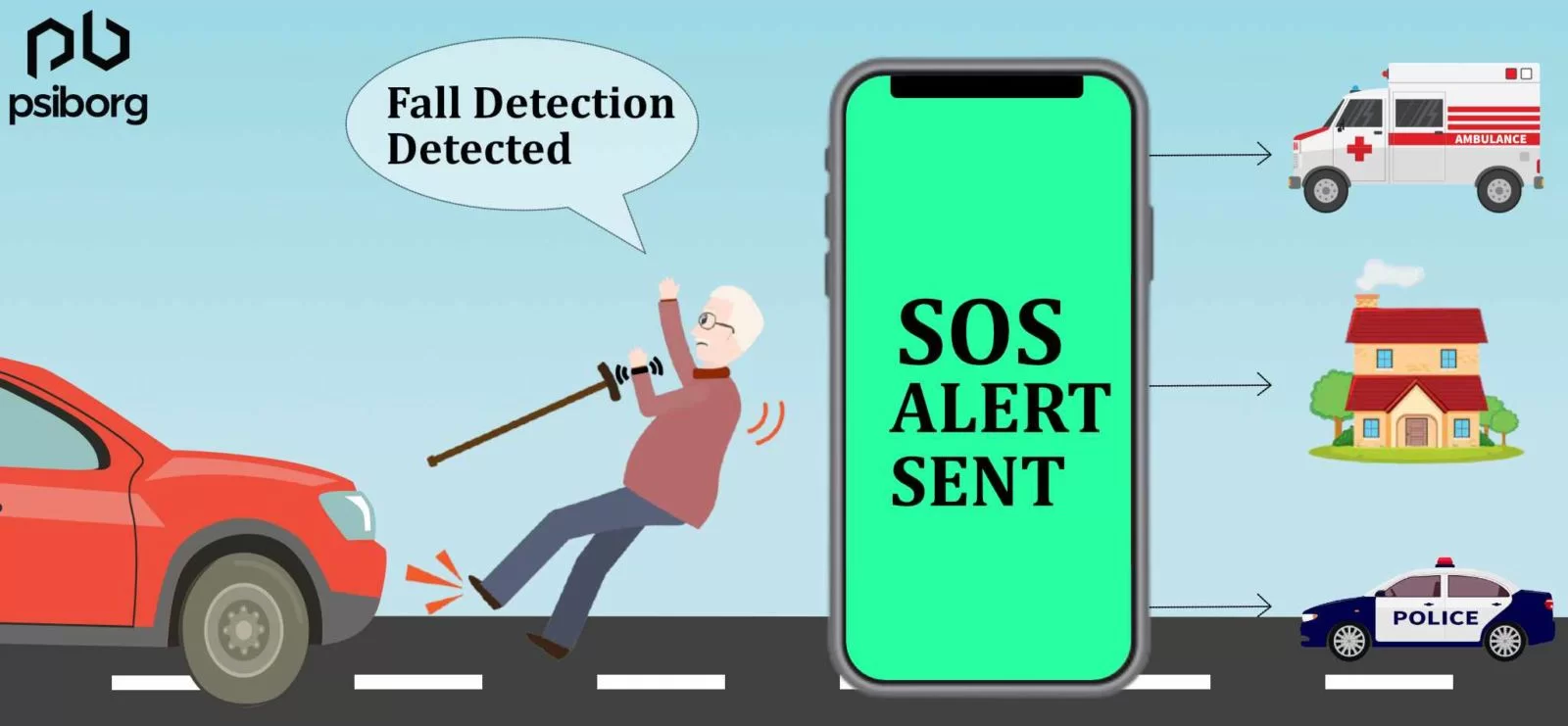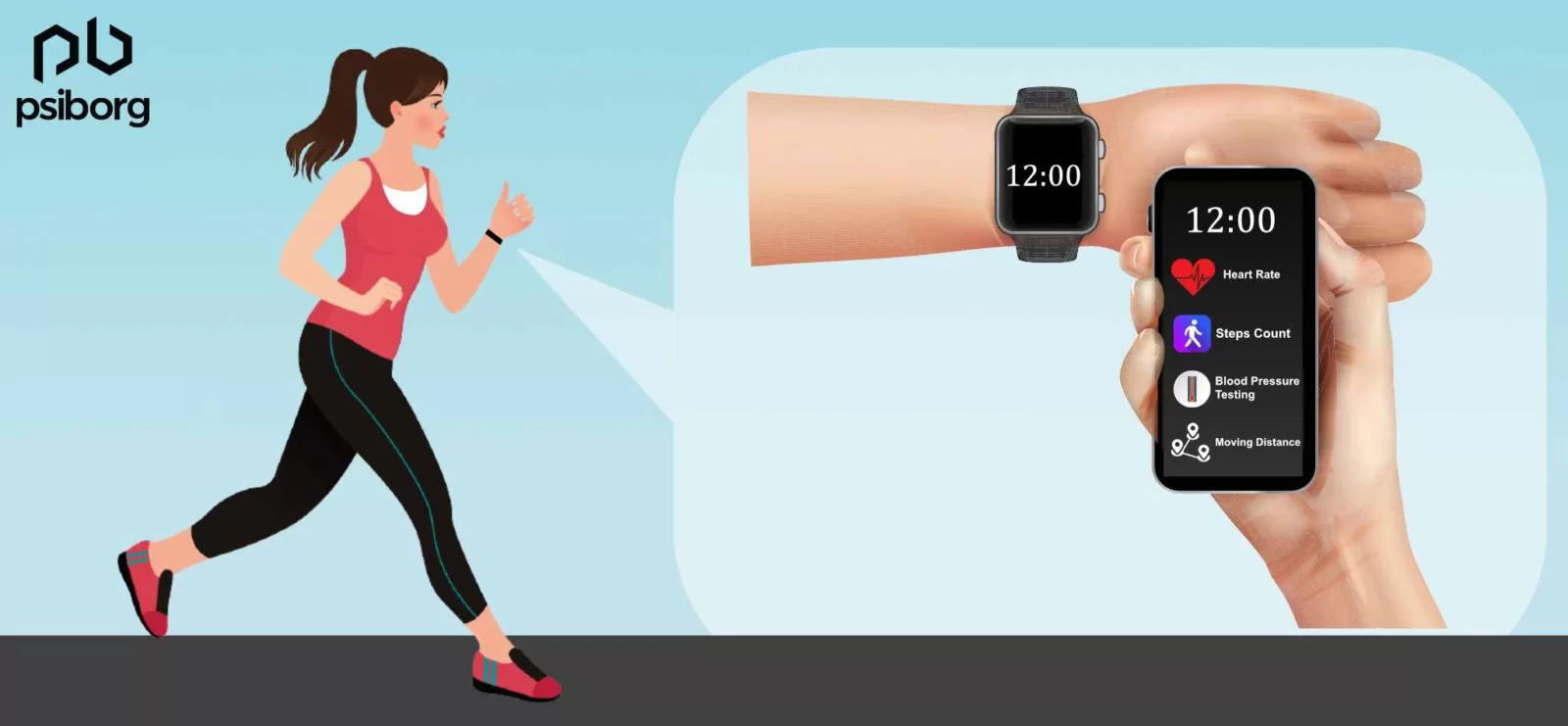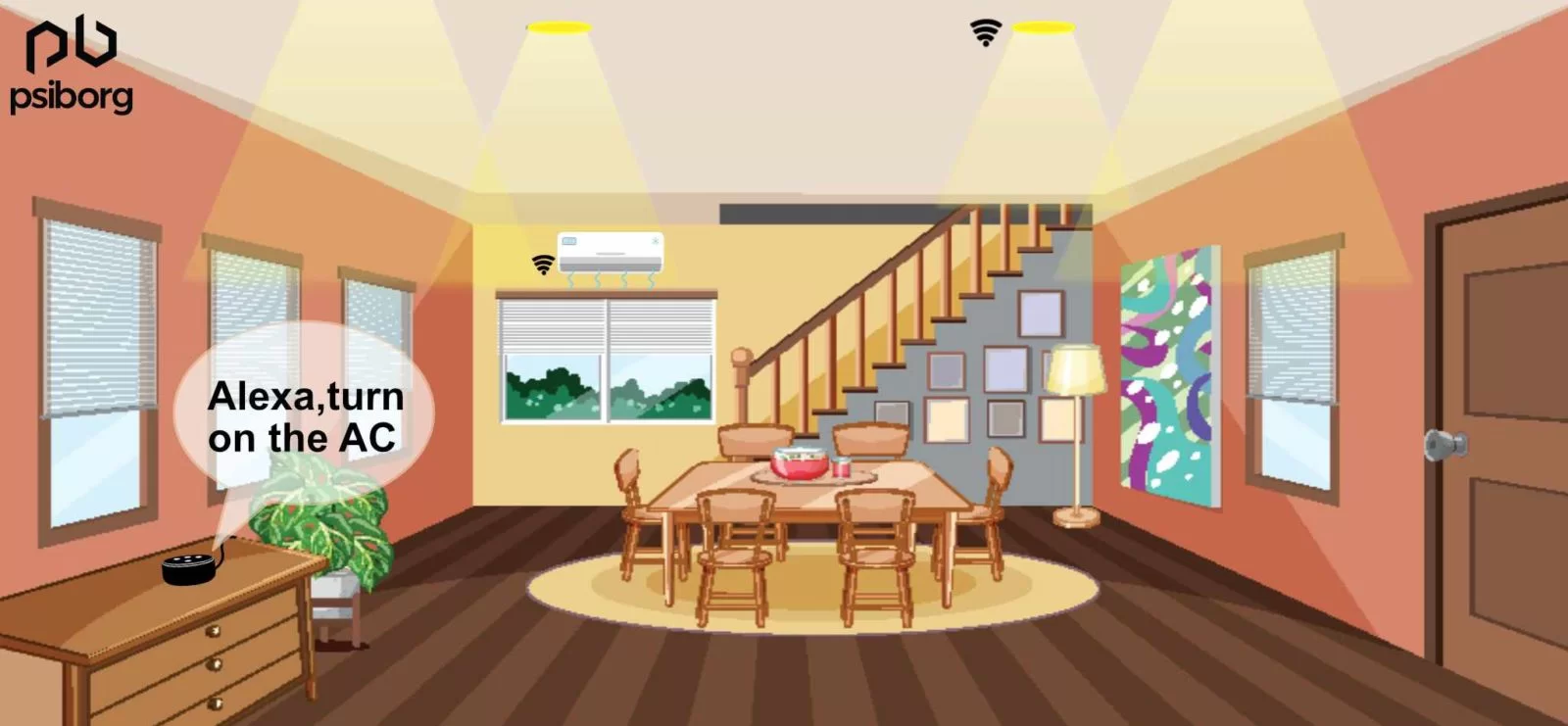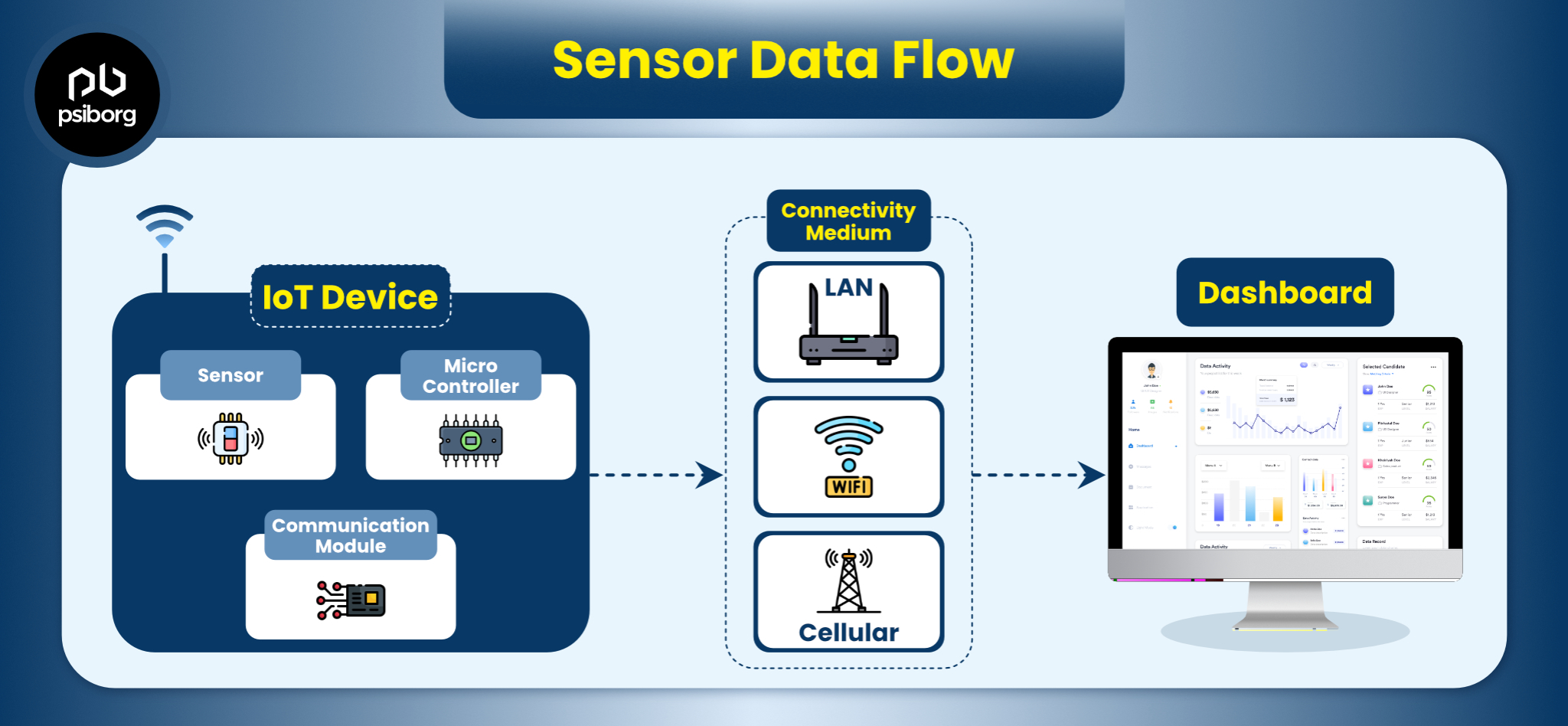WHAT ARE IOT WEARABLE APPS?
Wearable Technology is a category of technology devices that a user wears directly like cloth, or as a device. These gadgets are able to establish a connection with the internet directly or via a smartphone to do a number of tasks by data exchange between the device and the network. All these processes are carried out by applications installed in the devices. These applications are referred to as IoT wearable Apps.
The wearable device apps can access device hardware such as sensors, transceivers, etc. Wearable apps receive data from the device hardware and utilize this data with the help of the network with which they are connected, and give the desired result.
WEARABLE APPS FOR IOT HEALTHCARE
The health wearable device app is mainly deployed for remote patient monitoring, treatment, and rehabilitation purposes. The sensors collect patient health data and the device may process this data somewhat before transmitting it to the Internet for further analysis. The device may also receive data to enable the user to make further decisions. Its further uses under the health category are:
HEALTH TREATMENT & REHABILITATION WEARABLE SYSTEMS
IoT rehabilitation devices are helpful for disabled patients in maintaining and improving their physical or mental abilities.
HEALTH MONITORING WEARABLE SYSTEMS
Based on the type of sensors used, health monitoring wearable apps are classified into 5 types.
- Bio-potential sensors: electroencephalography (EEG), electrocardiography (ECG), electromyography (EMG), photoplesmography (PPG), etc.
- Motion sensors: accelerometer and gyroscope.
- Environmental sensors: ultrasound, pressure, temperature etc.
- Biochemical sensors: transdermal glucose.

ACTIVITY RECOGNITION AND SPORTS WEARABLES
Here, the wearables are worn during sports activities to record different metrics of the user’s or athlete’s activity in order to improve his or her performance Also, applications of this cluster consider gathering data regarding the recognition of the daily activities of humans and animals.
THERE ARE TWO CATEGORIES IN THIS:
WEARABLE APPS FOR DAILY PHYSICAL ACTIVITY TRACKING
The recognition of daily physical activity is typically focused on tracking routines and body movements related to skeletal muscles such as moving forward, walking backwards, jogging, sleeping, running, going up or down the stairs, bending the waist, the frontal elevation of arms, bending knees, and jumping front or back. It also includes recognition of rest postures such as sitting and relaxing, standing, laying down or the recognition of going from one posture to another, such as going from standing posture to sitting one
WEARABLE APPS FOR SPECIFIC SPORTS ACTIVITIES
Wearable apps can bring a plethora of opportunities for sports players, organizations and audiences. IoT in sports and fitness helps players increase their efficiency and offerings by creating an environment in which they can get better training or have access to data that helps to keep them healthier. Coaches are able to analyze injuries or find metrics on player performance. It also helps enhance the audience’s experience.

IOT WEARABLES FOR TRACKING AND GEOFENCING
This group of wearable apps is used mainly for tracking animals and humans to determine their location online. Finding the position of a person or animal who is wearing a wearable device is important in many applications. Studying the trajectory trip of a bird, finding the location of a senior citizen in a care-home facility, analyzing the movement of people who are visiting an exhibition, or pet tracking are some examples of these applications.
WEARABLES FOR EMERGENCY ALERT
This group of Emergency alert wearable apps belongs to the wearables that are used to provide a safe environment for the users. For instance, a fatigue monitoring system can alert drivers who fall asleep at the wheel and notify employers.
The wearable IoT sensors intended for safety mostly focus on three main applications: 1) fall detection and prevention 2) Drowsiness and fatigue detection 3) environmental condition monitoring.
THE COMING TOGETHER OF IOT AND WEARABLE APPS
Wearable technology has become more potent with the integration of the Internet of Things (IoT). IoT wearable technology is among the technological innovations that adapt to the digital age. Wearable technology owes its high-tech designs to the Internet of Things. The measuring mechanism for wearable technology products is provided by the Internet of Things.
WEARABLE IOT APPS WITH GOOGLE HOME/ALEXA SKILLS
Wearable devices are being used to seamlessly connect to smart environments, allowing consumers to save a lot of time. Nowadays, easy integration of wearable apps is possible with virtual assistants such as Google Home and Amazon Alexa. Examples include the Smart Door app.
THE NEED FOR YOUR APP’S COMPATIBILITY WITH VIRTUAL ASSISTANTS SUCH AS GOOGLE HOME AND ALEXA
Tech-savvy users of the 21st century expect IoT devices to dull compatibility with virtual assistants such as Google Home and Alexa. With full integration, the user can give verbal commands to the virtual assistant. The Virtual Assistant then interacts with the IoT device management app, and prints it to perform a specific task.

INTEGRATION OF WEARABLE APPS WITH GOOGLE HOME/ALEXA SKILLS
In technical terms, Amazon Alexa and Google Home have fairly similar structures and integration processes. Google can accommodate actions, while Amazon enables third-party developers to build skills. Developers should create a server that implements the skill or action needed to integrate the IoT app with these Virtual Assistants (VAs). Both of these have full compatibility with the node.js server platform.
Google has made its API. AI is available to developers who can easily host their actions on all platforms, including cloud servers. Amazon, on the contrary, requires its developers to host their skills on an AWS Lambda server.
Once the hosting issue is taken care of, you’ll need to make sure that your skill or action is in line with the security and quality standards of the platform. Amazon is somewhat considerate regarding skills. Developers are required to submit their skills to Amazon for review. This can typically take 2 to 7 days. Post review, developers are provided with a comprehensive analysis and all issues are identified. Developers are then given the necessary feedback to rectify the issues flagged in the review process and then get the skills approved. On the contrary, Google has stricter standards for submissions. Still, Google provides feedback to reviewers, highlighting the pitfalls to be resolved for approval.
COMMUNICATION BETWEEN IOT WEARABLE APP AND THE HARDWARE
Wireless communication is needed for wearable devices to transmit data to IoT hubs. With this, there are many problems with transmission and software control. Many devices operate in the localized region or within human body contact, such as the smartphone watch, wearable computing devices, RFID and health care monitoring devices. The RF band is shared with mobile/ cellphones, WLAN, Personal area networks, satellite communications, and many other applications.
All data transmission must be secure since wearable devices transmit vital information, which is sometimes personal data. For this purpose, this data needs to be private and for this, both access control and encryption must be used. There are several wireless communication systems that deal with the specific issues of body-centric communication using a device like a radio terminal placed on the skin surface of the human body.
IoT wearable apps commonly use HTTP and MQTT protocols for communication with wearable devices/hardware. MQTT is a Client-Server publish/subscribe messaging transport protocol. It is lightweight, open, simple, and designed so as to be easy to implement.
For IoT Mobile, applications require software updates for up-gradation and adding new features, in the same way, IoT hardware requires wirelessly updating hardware code known as Fota (Firmware over the air).
APPLICATIONS/EXAMPLES OF WEARABLE IOT APPS
Common applications include smart watches, body tracking devices, health monitoring wearable services, safety monitoring wearables, motion body capture etc.
CHALLENGES AND FUTURE POSSIBILITIES IN WEARABLE IOT DEVICES AND APPS
1) Data Resolution for Wearable Sensors
Miniaturization/small size demands due to comfort in wearable and low energy retirements result in low resolution of wearable IoT devices as compared to non-wearable ones.
2) Power Consumption
In order to enable wearable devices to operate for longer hours without the need to charge, optimizing their power consumption is a key concern
3) Safety
All wearable IoT devices make use of wireless networks to transmit their sensed data to another node, gateway or base station. This wireless transmission involves radiofrequency radiation that can have damaging effects on the user’s health as the transceiver antennas are very close to his/her body.
4) Security
One of the key challenges in wearable IoT apps is the implementation of security policies while keeping the system as simple as possible. Generally, wearables are easily hacked due to the poor encryption and protection they have.
5) Regulation
At present, there is a barrier to the use of wearable IoT devices in many industries due to the absence of proper regulations. As an example, in sports fields and arenas, the use of wearable IoT devices is technologically feasible, but it is not being used due to the regulations barrier.
6) Privacy
In IoT wearable app use, there is a regular transmission of personal data such as vital health signals, dosage, and location between the wearable and the IoT system. This could potentially create data privacy risks.
Wearable IoT offers endless opportunities and possibilities in many real-life applications. Wearable devices have a lot of potential when integrated with the IoT system.
We, at PsiBorg an IoT solutions company, understand the latest technologies in IoT wearable apps and excel at crafting and developing IoT wearable apps tailor-made to your needs. Reach out to us for all your wearable app solution needs.






